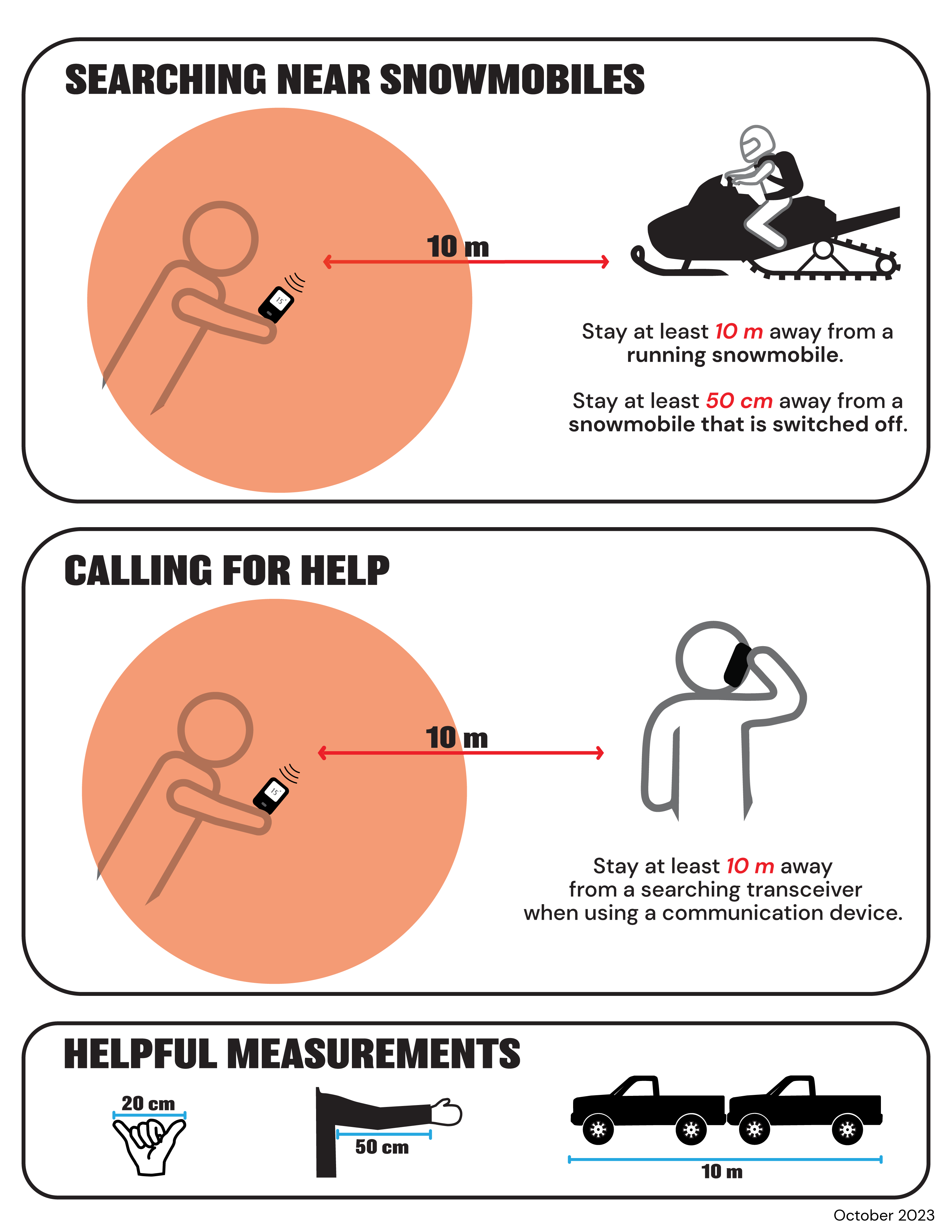By Doug Chabot EBS CONTRIBUTOR
Clicking into our skis or jumping on our sleds in search of powder is a universal mission at winter trailheads throughout North America. While the enjoyment is undeniable, the risks are real. Weather, avalanches, breakdowns, yard sales and being thrown from a sled like a bronc rider are things we accept in our favorite winter sports. We train and practice and push ourselves to be competent in the face of these hazards. We also spend hard-earned money on avalanche safety gear, notably an avalanche transceiver, shovel and probe. But there is a new unseen, potentially life-threatening hazard: electronic interference with our transceiver.
Our phones, GPS trackers, radios, heated gloves, jackets, boots, smartwatches and snowmobiles all emit electronic noise. Any of these can interfere with an avalanche transceiver, whether on a victim or a rescuer. If you or someone in your party is buried, minutes matter. There is an 80% chance of survival if dug up in 12 minutes, and that drops to 30% within 30 minutes.
Electronic interference means that if you are buried and your phone or GPS tracker is close, your beeping signal will be compromised. If you are a rescuer, being next to a running sled or having your phone close could give false depths and direction, resulting in much longer search times. Saving a person completely buried in an avalanche is hard, stressful work that takes practice to perform quickly. Do not complicate this task in any way. Knowing the dangers of electronic interference is critical, and fortunately, there are three easy steps you can take to minimize the consequences.
- Always keep all your electronic devices eight inches (20 cm) away from your beacon. A phone in a breast pocket over your beacon is a no-no. So is wearing a heated jacket!
- When you are doing a search, extend your arm out away from your body by one-and-a-half feet (50 cm), sufficient distance for personal electronics to not interfere with your search if you are not wearing battery-heated gloves.
- Turn off your sled before doing a beacon search. If one is running nearby, you need to get 100 feet (30 m) away from it.
Practice until you do these things automatically and tell your partners about it since they are the ones who will dig you up and save your life.
All our devices make us safer and more comfortable in most but not all circumstances. Serious backcountry skiing or riding demands attention to the details, and this new hazard is worth taking seriously.


Doug Chabot is the director of the Gallatin National Forest Avalanche Center.













